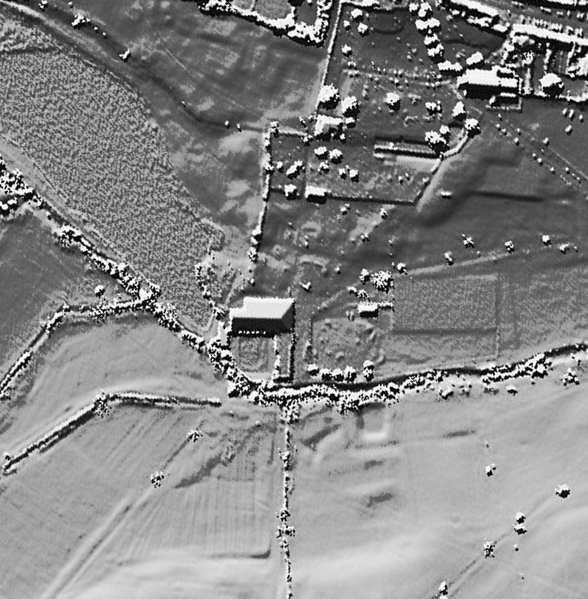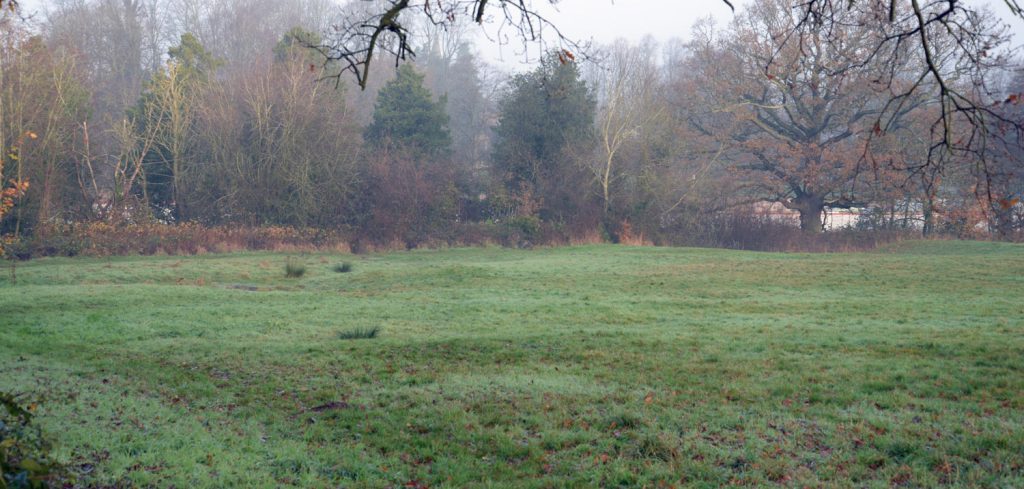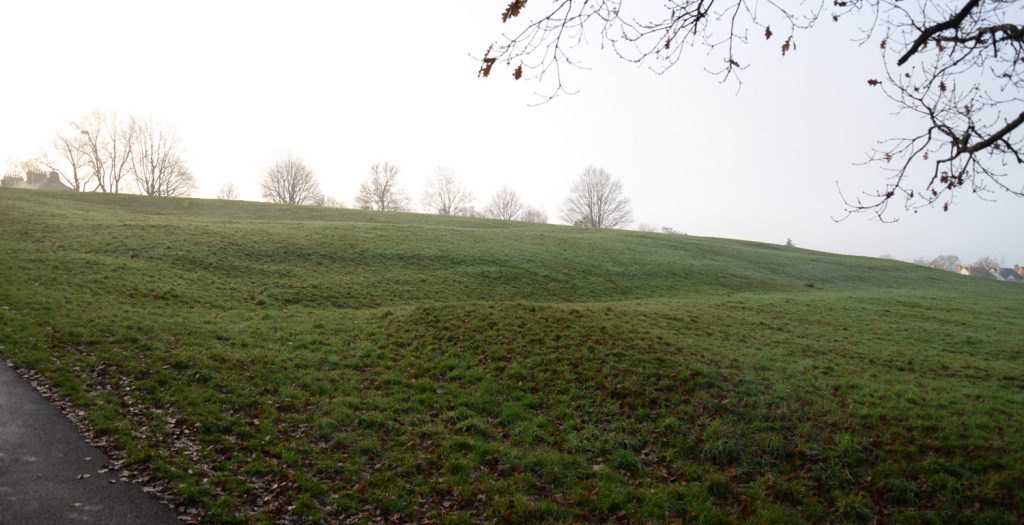Where next for Abbey Fields Archaeology?
Interest in Abbey Fields archaeology has risen since the discoveries under the swimming pool complex, but where else should be investigated for more discoveries?
It is not a case as one might suppose that you could dig a hole anywhere in the park and uncover stonework. For example, the Severn Trent excavations of a wide trench diagonally across the whole park revealed archaeology in just one spot. Similarly the rebuilding of the 220 yards Cow Path uncovered just a 4ft wall and possible drain.
There are a number of buildings associated with an Abbey that are ‘missing’ from what has been uncovered so far; these include the Abbott’s House (normally a grand affair away from the ecclesiastical buildings), a place of learning, and stables and possibly a coach house for visitors and their transport. There may also be additional farm buildings.
A number of areas have been identified as potential archaeology sites; here I take a look at them.
 |
 |
(left) OS map showing in red the excavated and above-ground remnants of the Abbey complex north of the brook.
(right) Lidar image showing irregularities in the ground.
Extending the 1920s excavations:
The 1920s excavations came to a halt due to lack of funds but it left several areas ripe for a continuation. (See map above)

One is to follow the buildings towards the brook. The OS map suggests further buildings could lie at the end of the tennis courts. Parch marks have suggested buildings in the direction of Bridge Street, a continuation of those already found.

Not all the cloisters were uncovered to the south of the churchyard but their extent is easy to determine from what was found, but perhaps the undulations suggest there are extensions to be discovered?
Behind Abbotsfield:

Parch marks and Lidar (see image above) suggest there are structures inside the park near the boundaries with the High Street buildings. In addition, alongside the cemetery (to the right) ground-penetrating radar has suggested there may be a road surface at not too great a depth. Known and likely structures south of the brook could even point to a roadway across the park from here to near the war memorial, with potentially a number of undiscovered buildings alongside.
Extending the Severn Trent discoveries:
Buildings were uncovered in 1989 during work by Severn Trent. Extending this could be quite straightforward. It now has more significance due to similar buildings being discovered on the opposite side of the brook under the swimming pool complex.
Alongside Bridge Street:

A geo-physics survey carried out by the KHAS some 20 years ago, revealed walls that suggest a large building fronting onto Bridge Street and continuing under the car park. This has added interest as it is alongside the embankment built for Townpool Bridge so may also reveal details of the original road. By chance, there is an excavation ongoing as part of a new water mains (December 2024).
Alongside the War Memorial path (east):

On the Bridge Street side of the path are a number of irregularities; one is a Dip alongside the brook (top right, alongside the prominent tree) but there are others further up the hill and alongside the field boundary that could suggest a substantial building.
Alongside the War Memorial path (west):

Almost opposite on the other side of the path are more ground irregularities (well-known for adding thrills to the toboggan run) and what appears to be a well-defined pathway leading away to Forrest Road, more or less following the contour of the hill.

This dip a little further up may actually be an indication of quarrying, but we won’t know unless it is investigated.
North of the pool:

The discoveries at the swimming pool could suggest more buildings are waiting to be uncovered between there and the barn and gatehouse; undulations certainly suggest this is a possibility.
Having said all this of course, none of it will happen. Why? Cost is one reason, and Historic England not allowing it is likely another. I think I am right in saying that since the 1920s there has only been one successful request made to actually look for archaeology other than where construction work was planned.
I do not believe anyone has ever written an ‘official’ proposed programme of possible investigation, or even composed a list of possible sites, such as I have attempted here.
It would be good if such a list could be compiled by those with the expert knowledge of the Abbey to back their suggestions. Maybe the occasional small dig in prospective areas could be included in Kenilworth School History ‘A’ levels, giving them hands-on experience and the chance of report-writing, and encouraging an interest in the town and its history, whilst at the same time potentially making discoveries to the benefit of us all.